What is Surface Pattern Design?
Surface pattern design is the art of creating repeating patterns that can be applied to various surfaces, including textiles, wallpapers, packaging, and home decor.
Surface pattern design is where creativity meets functionality! It’s about mixing artistic skills with smart design thinking to create patterns that pop on everything from fashion to home decor.
Seems easy to you? Think again.
The Basics of Surface Pattern Design
Key Elements of a Pattern
A great pattern has balance, flow, and adaptability. Here’s what us designers need to care about when working with a surface pattern to make it truly work:
Motifs
These are the building blocks of any pattern. The shapes, symbols, or illustrations that repeat throughout the design. They can be hand-drawn, digital, or inspired by real-world objects.
Repetition & Layout
A pattern only works if it seamlessly repeats. The way motifs are arranged (straight repeat, half-drop, or brick layout) impacts how smooth and visually appealing the final design feels.
Scale & Proportion
A pattern that looks amazing on a notebook might feel overwhelming on wallpaper. Adjusting the size of motifs ensures patterns stay functional across different products.
Color & Texture
Color sets the mood, while texture adds depth. A well-chosen color palette can make a pattern feel playful, elegant, or bold, while a texture can add a touch of personality.
Types of Surface Patterns
Patterns come in a variety of styles, each suited for different industries and aesthetics. Choosing the right pattern style depends on your brand’s message, audience, and the product it’s applied to. Here’s a breakdown of the most commonly used ones:
Geometric Patterns

Patterns based on geometric shapes such as squares, triangles, and circles. These designs often create a sense of structure and order. They work well for retrò styled or very modern branding, minimalistic packaging, and bold fashion pieces. If you’re aiming for a sleek, contemporary feel, geometric patterns are probably your choice.
Organic Patterns
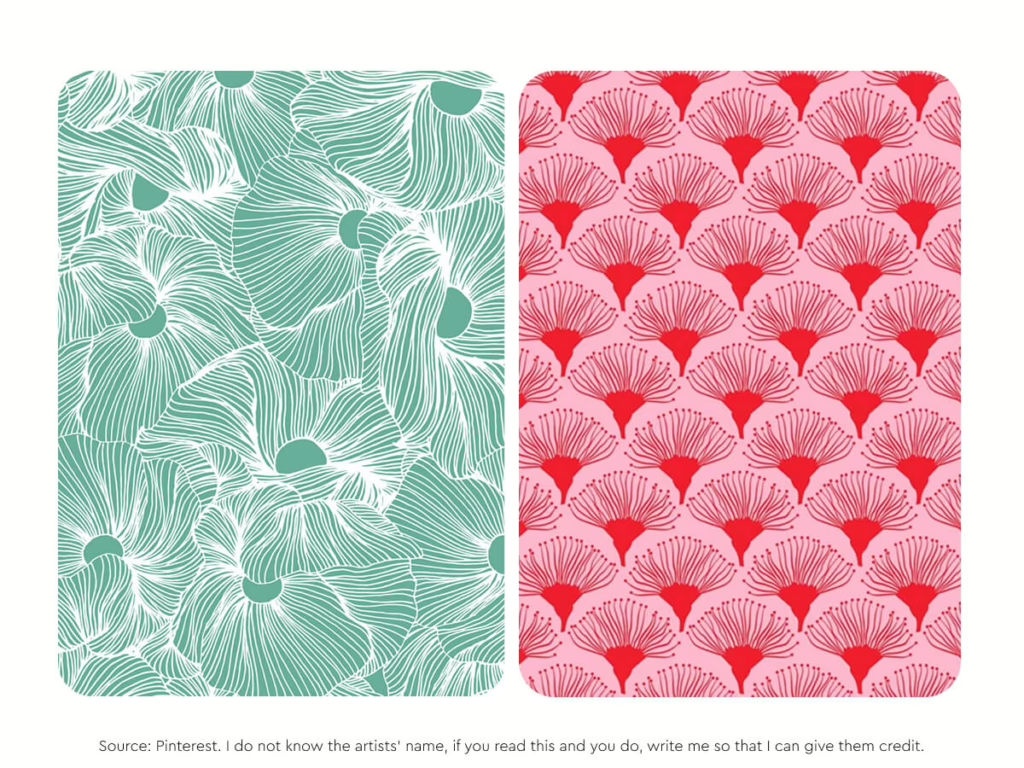
Inspired by nature, organic patterns feature fluid, hand-drawn elements like florals, leaves, and waves. These designs bring warmth and an authentic, handmade touch, making them ideal for brands focusing on sustainability, wellness, or artisanal craftsmanship. Organic patterns work beautifully in home decor textiles, eco-friendly product packaging, and soft fashion prints.
Abstract Patterns
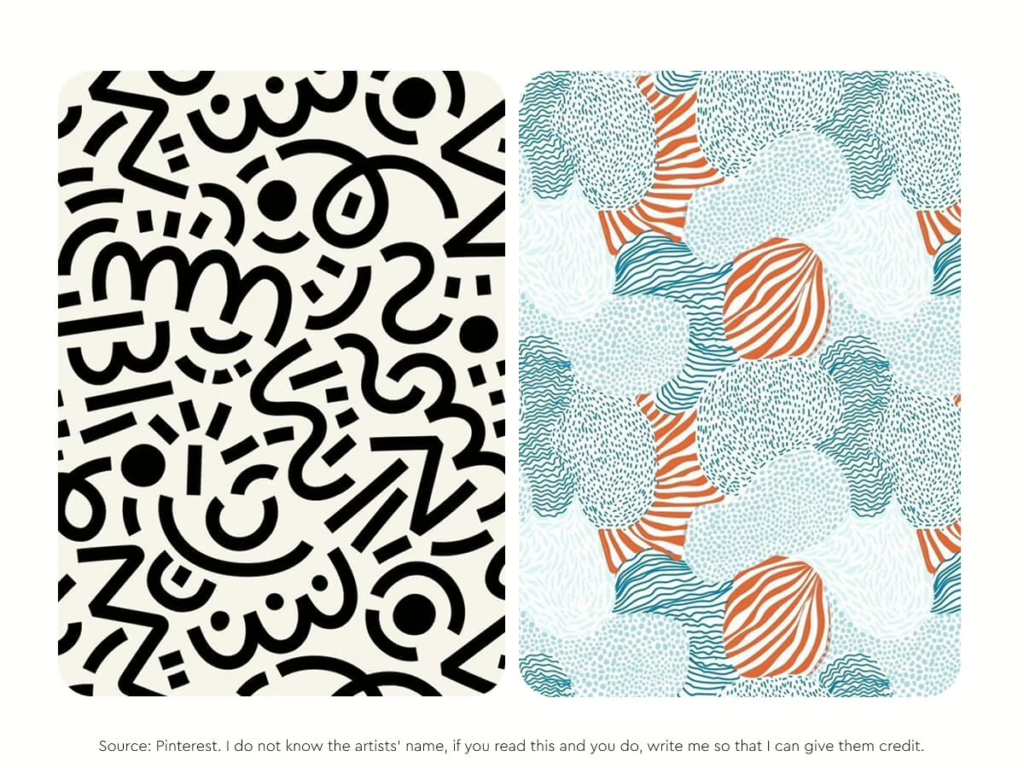
Non-representational designs that emphasize color, texture, and form to create expressive compositions. Abstract patterns allow for creative freedom and can evoke different moods through dynamic shapes and vibrant colors. They are often used in high-fashion textiles, modern branding elements, and artistic stationery, offering a bold and energetic look that grabs attention.
Selecting the right pattern type is an important choice as it ensures your surface design aligns with your brand’s message and product function.
If you’re unsure which approach works best, working with a professional designer can help you make strategic decisions that will pay back in the long run.
Understanding Color Theory
Before diving into color specifics for patterns, it’s important to recognize that these principles apply across all forms of graphic design. In fact, I already talked about it in this article about graphic design and logo design.
Whether you’re creating branding materials, packaging, or surface patterns, color selection plays a critical role in how people perceive and interact with your designs. Choosing the right colors is part of your brand strategy and functionality.
Color Harmonies
Color harmony involves selecting color combinations that are visually appealing and create balance within a design. When designing a surface pattern, keeping these harmonies in mind is especially crucial, as it ensures that your final product feels cohesive and professional.
Here are some of the most common types:
- Analogous: Colors that sit next to each other on the color wheel. They create a natural, serene look and work well for soft, organic patterns.

- Complementary: Opposite colors on the wheel create high contrast and energy. Best for patterns meant to grab attention or evoke excitement.

- Monochromatic: Variations of a single color. This method is great for achieving a refined, elegant, and modern look while keeping the pattern visually interesting. It also works exceptionally well when aiming for an aesthetically pleasing design while maintaining a balanced and understated composition.

Psychology of Colors in Patterns
Colors evoke emotions and influence customer decisions. This is why choosing the right palette for your surface design is crucial, especially if you’re creating patterns for a brand or product that needs to communicate a specific message. Let’s break it down:
- Warm colors (reds, oranges, yellows): These colors are high-energy, attention-grabbing, and often associated with excitement, creativity, and enthusiasm. Perfect for bold, statement-making designs.
- Cool colors (blues, greens, purples): These create a sense of calm, professionalism, and trust. They’re often used in spa-related products, nature-inspired prints, and minimalist designs.
- Neutrals (beige, grays, black, white): These work well as foundational colors that complement more vibrant hues. They help balance a pattern and keep it versatile across different surfaces.
Tools and Techniques for Surface Pattern Design
Creating surface patterns that translate beautifully onto textiles, wallpapers, and product packaging requires a mix of artistic skill, technical knowledge, and the right tools.
Whether you’re starting from hand-drawn sketches or working entirely digitally, understanding different methods helps ensure your designs are seamless, scalable, and production-ready.
Traditional Methods
Sketching and Painting
Many professional designers begin the process by hand, using tools like pencil, ink, watercolor, or gouache to sketch out motifs. This technique allows for an organic, artistic feel that digital tools sometimes struggle to replicate.
Hand-drawn designs are then scanned and refined digitally, ensuring the final pattern retains the authenticity of handmade elements while being adaptable for different applications.
Screen Printing
Traditional printing methods, like block printing and screen printing, have been used for centuries and remain relevant in modern surface design. These techniques are known for:
- Unique, layered textures that digital designs can’t always achieve.
- Limited color palettes that create striking visual contrasts.
- A handcrafted, tactile quality that works well for boutique and artisan products.
These methods are particularly useful if you want a bespoke, small-batch production feel for textiles or paper goods.
Digital Tools
Adobe Illustrator
For those looking for clean, scalable patterns, Adobe Illustrator is the go-to software. It allows designers to create seamless repeats with precision using:
- Vector-based shapes and lines for infinite scalability.
- Pattern-making tools to test different repeat structures effortlessly.
- Color management systems to ensure accurate color reproduction across different surfaces.
Procreate
For a more organic, hand-drawn effect, many designers use Procreate on the iPad. This tool is ideal for:
- Creating custom brush strokes and textures.
- Mimicking watercolor, pencil, and ink effects digitally.
- Allowing for free-flowing, spontaneous sketching before refining designs in vector-based programs.
Other Software and Tools
- Photoshop: Best for raster-based patterns and texture overlays, ideal for more painterly, textured designs.
- Affinity Designer: A budget-friendly alternative to Adobe Illustrator that still offers robust vector design capabilities.
- Pattern Lab & Repper: Specialized software that automates the creation of seamless repeating patterns, making it easy to experiment with different layout styles.
Creating Surface Pattern Designs
As mentioned well-crafted pattern must be seamless, scalable, and aligned with your brand’s identity. Understanding how patterns are created, the different types of repeats, and the design workflow will help you communicate effectively with your designer and ensure the best possible outcome.
Designing a Repeat Pattern
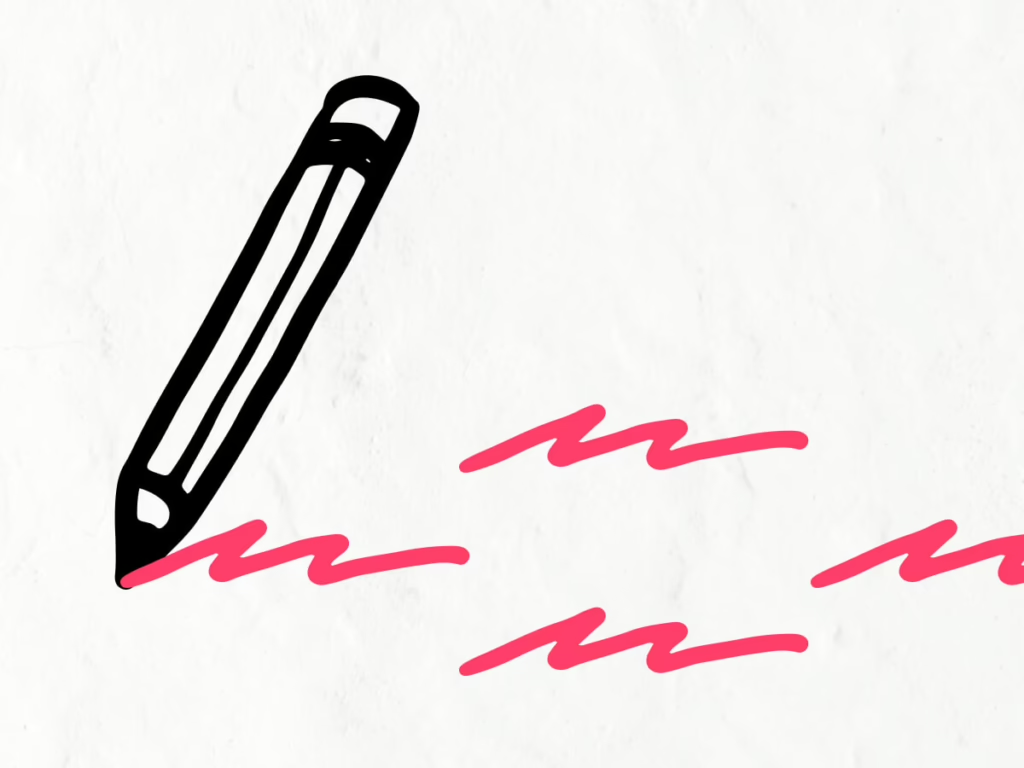
A successful surface pattern is all about how well it repeats. The repetition should be flawless, visually balanced, and adaptable to different product sizes without losing its integrity. Here’s an overview of the most common types of pattern repeats that professional designers use:
Types of Repeats: Straight, Half-Drop, etc.
- Straight Repeat: Identical motifs arranged in a grid. Best for structured, geometric designs and commonly used in packaging, wallpaper, and tiling.
- Half-Drop Repeat: Motifs staggered by half their height, creating a more dynamic and flowing look. This style is often preferred in fashion textiles and decorative prints.
- Brick Repeat: Similar to a half-drop but staggered horizontally, providing a more organic and less rigid feel. Ideal for home decor fabrics and large-scale designs.
Each of these repeat structures serves a different purpose depending on the product. A skilled designer can help you determine which is best for your needs and ensure that it translates well into print or digital applications.
Common Mistakes and How to Avoid Them
- Gaps in Repeats: Patterns must transition smoothly from one tile to the next. Any misalignment or unintended spacing can create visible gaps, making the pattern look unfinished or cheap in production.
- Overly Complex Designs: While intricate patterns can be stunning, they don’t always translate well onto certain surfaces or materials. Simple, clear motifs often have more impact and versatility.
- Ignoring Scale: The size of a pattern plays a huge role in how it appears on different products. What looks great on a small object might be overwhelming on a larger surface. A designer will test different scale variations to find the optimal size for each use case.
From Concept to Final Product
A strong surface pattern doesn’t happen by accident. It’s the result of strategic planning, artistic execution, and technical adjustments. Here’s how designers turn an idea into a professional-grade pattern:
Gathering Inspiration
The first step is collecting visual references, textures, and color palettes that align with the intended product and brand identity. Inspiration can come from anywhere: from nature, architecture, vintage textiles, or even abstract concepts.
Creating Mood Boards
Mood boards help organize inspiration into a cohesive direction and create a bridge between the client’s request and the designer’s vision. This step ensures that the pattern reflects the intended tone, energy, and aesthetic before moving into detailed sketching.
Sketching and Refining Ideas
Hand-drawn or digital, sketches form the initial building blocks of the pattern. At this stage, designers refine the motif, adjust layouts, and test different repeat styles to achieve a visually balanced and production-ready design.
The Business of Surface Pattern Design
If you’re looking to create custom surface patterns for your brand or product, understanding how designers work and market themselves can help you find the right creative partner. On the other hand, if you’re a designer looking to grow your business, having a strong strategy for marketing and networking is essential.
Licensing vs. Selling Patterns
If you’re hiring a designer or you’re a designer selling your patterns, it’s important to understand how pattern rights work.
- Licensing: The designer retains rights and earns royalties when companies use their patterns. This is a great option if you want exclusive but non-permanent access to a design.
- Selling: You buy full ownership of the pattern, meaning no one else can use it. This is ideal for established brands looking for unique, long-term branding elements.
Understanding these models will help you negotiate fair terms when commissioning custom work.
Building a Portfolio
For Businesses: How to Choose the Right Designer
If you’re hiring a designer, knowing what to look for in a portfolio ensures you find someone who aligns with your brand’s needs. Consider these key factors:
- Industry Experience: Is their experience matching your goal? If you’re a small business, a junior might be a cheap but still solid choice, while if you’re an established fashion brand you might need the guiding experience of a senior.
- Consistency & Style Fit: Does their aesthetic complement your brand vision?
- Practical Application & Knowledge: Does the designer have experience working with the specific product you’re developing? If not, do their overall experience allow them to grasp quickly and still deliver a good job?
For Designers: What Makes a Strong Portfolio?
If you’re a designer looking to attract high-quality clients, your portfolio should showcase your skills, versatility, and professionalism.
Here’s what to include:
- Variety & Adaptability: Display a diverse range of pattern styles to demonstrate your own flexibility across industries or styles.
- Mockups & Real-World Applications: Show your patterns applied to actual products (fabric, wallpaper, stationery) to help potential clients visualize the final result.
- Process & Concept Development: If possibile, include sketches, mood boards, and development stages to highlight your creative process and problem-solving approach.
In both cases, communication between designer and client is crucial to ensure a smooth and successful collaboration.
Marketing Your Designs
If you’re a designer, effectively marketing yourself can mean the difference between occasional work and a steady stream of high-quality clients. If you’re a business owner, finding a designer with strong marketing skills often means they understand industry trends.
Social Media Strategies
For designers looking to attract clients, social media is a powerful tool.
Put yourself out there by sharing process videos and behind-the-scenes sketches to showcase expertise, creating a strong portfolio that speaks about your style and experience and collaborating with brands and other designers to increase visibility.
If you’re a business owner, following these designers on social media can help you discover new talent and assess their working style before hiring them.
Networking with Industry Professionals
For designers, networking is crucial to growing their business. Attending design fairs, joining online communities, and reaching out to potential clients can open doors to collaborations.
As a business owner, attending these events can also help you find designers who align with your brand’s vision.
If you’re a surface pattern designer struggling to find clients, a structured digital marketing strategy can help. Feel free to book a free introductory call with me, I’ll be happy to give you a free audit so you can see where you stand.
Top Industries for Surface Pattern Designers
Surface pattern design is essential across multiple industries, each with its own unique requirements and applications. Understanding these industries can help businesses decide where to incorporate custom designs and help designers find their niche.
Fashion and Textiles
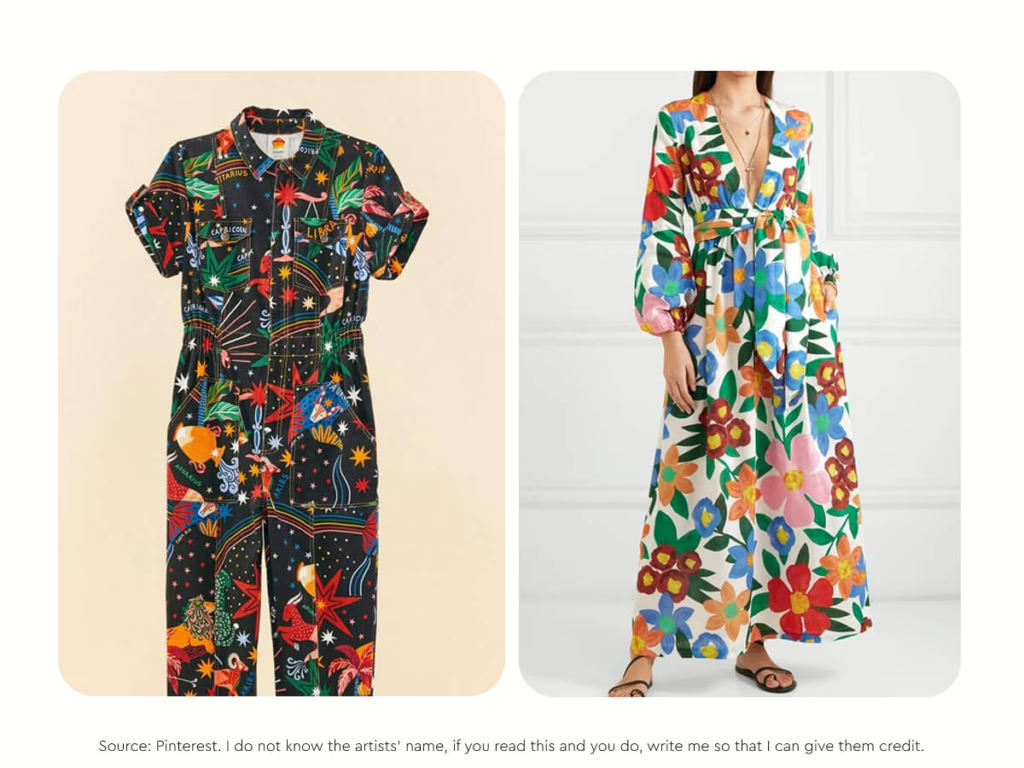
Surface patterns are fundamental in the fashion industry, appearing on everything from clothing fabrics to accessories.
Custom textile prints define a brand’s identity and create seasonal collections that stand out in a competitive market. Whether for fast fashion, luxury couture, or activewear, pattern design plays a critical role in fabric selection and consumer appeal.
Home Decor

Interior spaces come to life with surface patterns through wallpapers, upholstery, rugs, and ceramics. Interior designers and home brands often seek exclusive, high-quality patterns that resonate with contemporary trends, such as botanical motifs, abstract art, and geometric prints. Custom designs add uniqueness to a brand’s home collection, making it a major industry for pattern designers.
Stationery and Packaging
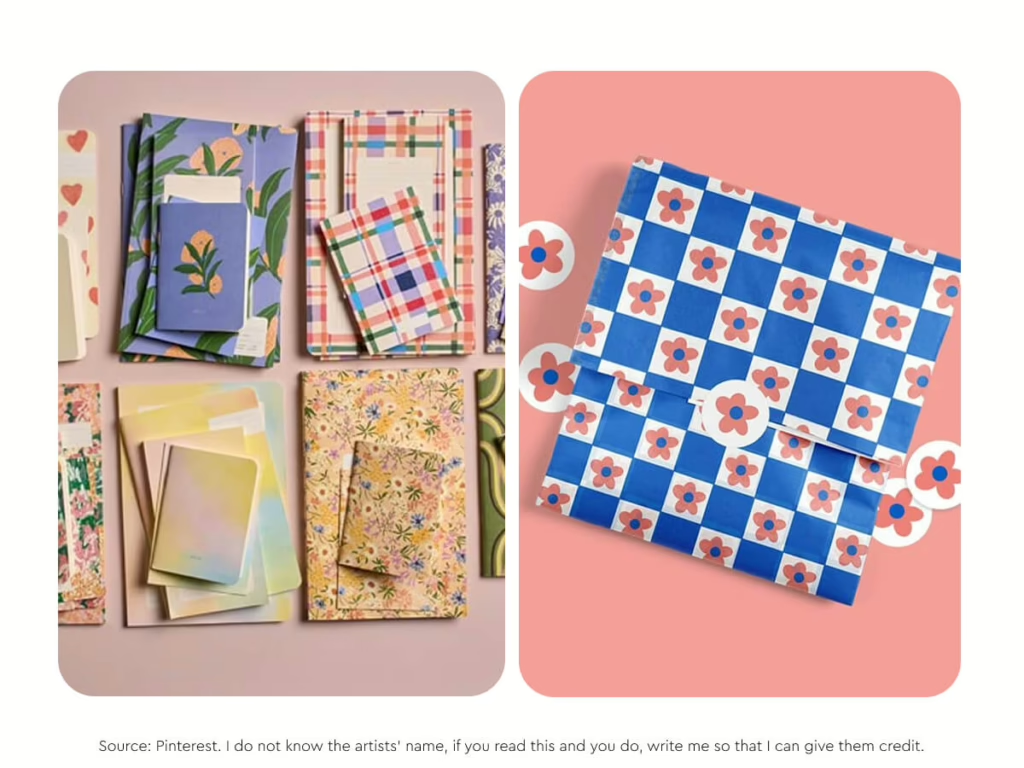
Custom patterns are widely used in notebooks, greeting cards, planners, and corporate branding. Additionally, the packaging industry incorporates surface designs on wrapping papers, product boxes, and shopping bags to enhance brand storytelling. In a market where visual appeal influences purchasing decisions, brands that use exclusive patterns for packaging create a memorable unboxing experience and strengthen brand recognition.
Career Paths in Surface Pattern Design
A career in surface pattern design offers diverse opportunities based on skillset and professional goals. Whether working independently or within a company, designers can find fulfilling roles in different creative sectors.
Freelance Designer
Freelancing allows designers to work on a project basis, either by licensing their work or creating custom patterns for brands. Many freelancers build digital storefronts or collaborate with manufacturers to sell fabric collections, stationery, or home decor products.
In-House Designer
In-house designers work within brands or manufacturers, producing exclusive collections that align with seasonal trends and company branding. These positions often exist in fashion, interior design, and consumer product industries, requiring designers to collaborate with creative teams and manufacturers to bring products to market.
Illustrator
Illustrators specializing in surface pattern design focus on creating unique hand-drawn or digital artworks that translate into patterns. They work with clients needing custom elements for branding, merchandise, or special edition packaging.
Textile Designer
Textile designers work specifically with fabric production, ensuring that patterns fit manufacturing specifications and align with textile printing techniques like screen printing, digital printing, and weaving.
Face to Face with a Surface Designer
Meet Lina Callisto
To provide deeper insight into the world of surface pattern design, I sat down with Lina Callisto, an experienced surface designer.
Lina Callisto is a surface designer and illustrator who loves creating soft and playful patterns inspired by nature and retro prints. She works out of her home studio near Montreal. Her education and experience in industrial design, interior design and architecture has given her a unique perspective as she combines her knowledge of products and spaces with her passion for art.
Lina’s versatile designs have garnered collaborations with both local and international brands, bringing their ideas to life across a range of products, from wallpaper and home decor to packaging and public art installations. Above all, she hopes her designs infuse joy, beauty and lasting value into the products and spaces in which they are found.
How did you get started in surface pattern design, and what inspired you to pursue this career?
I came across surface pattern design at a time where I wasn’t feeling very inspired in my day job, and was searching for a creative outlet to express myself. I wanted to reconnect to my artistic side, so I watched a few tutorials online, practiced through a daily challenge on Instagram, which helped me land my first licensing deal, and slowly built my skills and portfolio to the point where I started pitching my work to companies.
Designing patterns is something I find both challenging and intrinsically satisfying. I love solving creative problems and seeing my designs come to life on real products in people’s homes. That, and the opportunity to work for myself, is what really drew me into the world of surface pattern design.
What are some of the biggest challenges surface designers face when working with brands and manufacturers?
It can be hard to balance a client’s expectations with their budget, timeline and manufacturing constraints. We want to make sure we’re creating our best work, while also being adaptable and open to feedback. If a brand has never worked with a designer before, there can be a learning curve and they may need more reassurance in the designer’s process. Both sides need to be open to communication, collaboration, and trust in each other’s skills to produce the best results that everyone can be proud of.
From a business perspective, what should companies look for when hiring a surface designer?
In many cases, companies would benefit from hiring a well-rounded designer who can easily adapt to a project’s constraints. As much as having a distinct style can be helpful, it’s important to choose a designer who can also work from a creative brief, meaning they can ask the right questions, and create designs and cohesive collections that align with the brand, product type and target audience.
Look for designers who either have experience in your specific industry, or ones who have worked on a wide range of products, which shows that they can adapt to any type of project. Designers who have a clear process when working with clients and a great attention to detail in their work is also really important.
What advice would you give to aspiring designers trying to break into the industry and attract clients?
Here are the main steps I suggest when starting out: Focus on one product type or category. For me, that was home decor and wallpaper. Research trends in that category and companies that sell those products and work with designers. Tailor your designs to that category by adjusting types of motifs, colors and scale based on what you see in the market. Then, send personalized pitches of your work to those companies and follow up as needed.
Of course refining our skills is important, but a lot of it also comes down to our mindset, our resilience and our patience. Start pitching before you feel ready, start sharing your work before you think it’s perfect, and don’t be afraid to make mistakes.
I cringe when I look back at my very first patterns, but they were the best I could do at that point. I think us designers are often too hard on ourselves. But we learn faster than we think. Even if progress feels slow and you feel overwhelmed, just keep going one small step at a time, and you’ll see how much you’ve improved over time. Reach out to more experienced designers for help, connect with others for moral support, and celebrate your wins. We’re all just learning as we go.
What are some of the latest trends in surface pattern design that businesses should be aware of?
It seems like people have been craving more joyful spaces lately. There’s been a shift toward maximalism, versus the super clean minimalist aesthetic that was prevalent before. We’re seeing this trend in different industries like interior design, fashion and graphic design. Designs are leaning toward vibrant color palettes, mixing and matching playful patterns and textures, sometimes with vintage and retro influences. Personally, I’m loving this trend!
But I will say, as much as it’s important to be aware of what’s trending, businesses should only follow the trends that work for their brand and target audience, without compromising their brand identity. A surface designer can help bring in some of those trendy elements into their designs while making sure the end result is in line with the company’s goals.
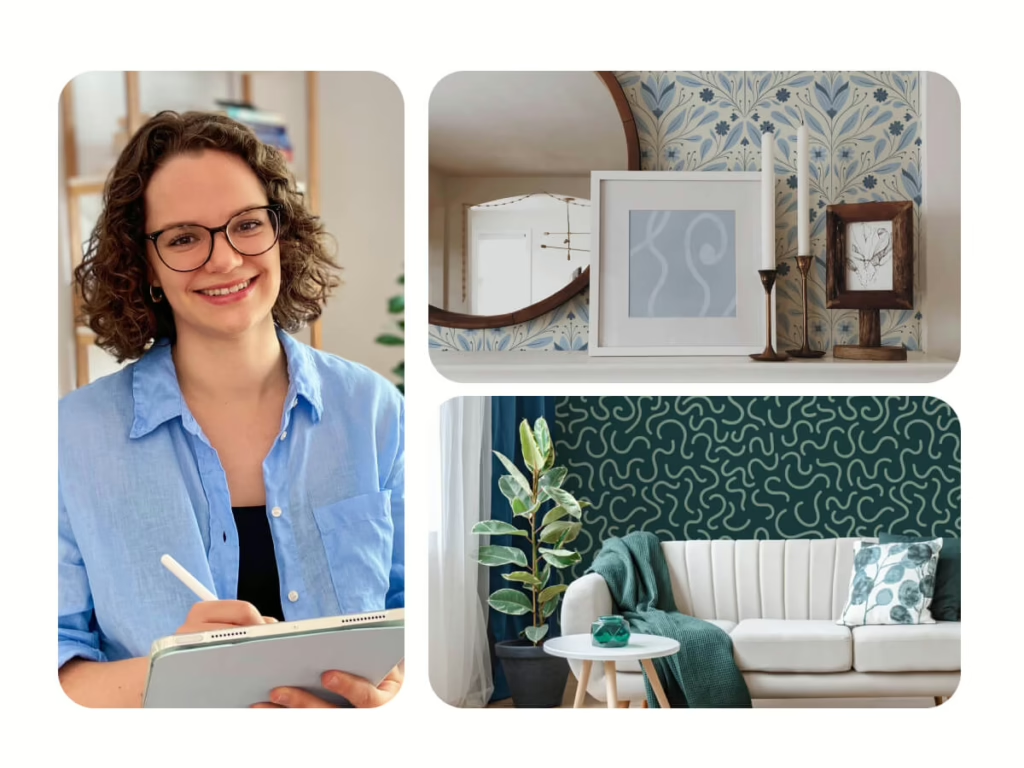
I want to thank Lina for her time and for sharing her knowledge. If you want to work with her, you can find her on her website www.linacallisto.com or follow her on Instagram at @lina.callisto.
Conclusion
Surface pattern design is a beautiful and powerful tool for boosting product aesthetics and strengthening brand identity.
If you’re a business looking for a custom surface pattern designer, investing in a professional ensures that your patterns are aligned with your brand’s goals, optimized for different printing methods and visually compelling, helping your product stand out in a crowded market.
If you’re a designer looking to grow your career, mastering pattern creation, branding strategy, and marketing techniques is key to landing more clients and expanding your portfolio.
📢 Looking for guidance on marketing your business?
Book a free introductory call to find our your brand’s potential.



